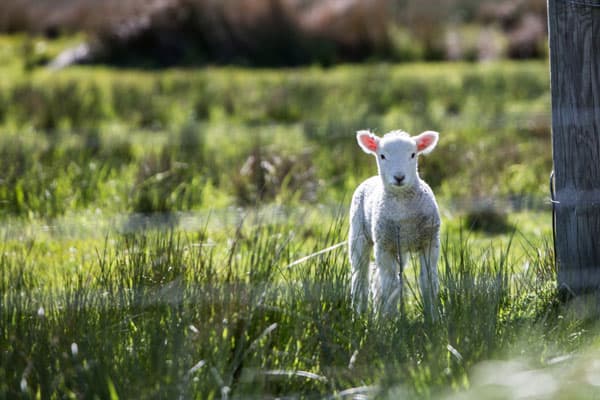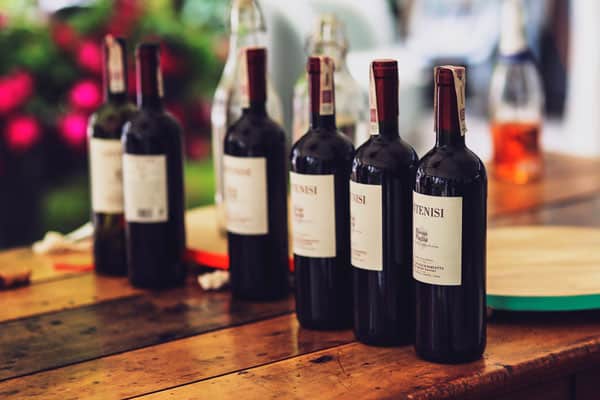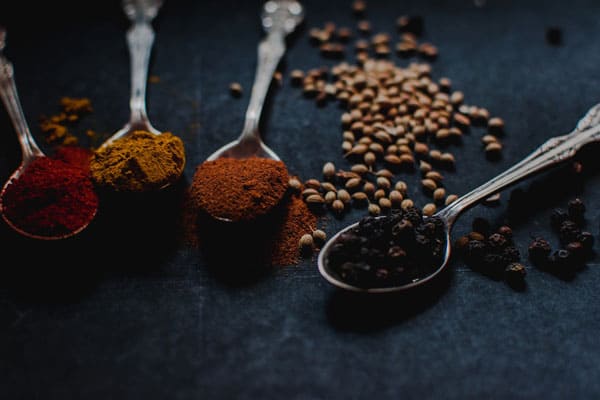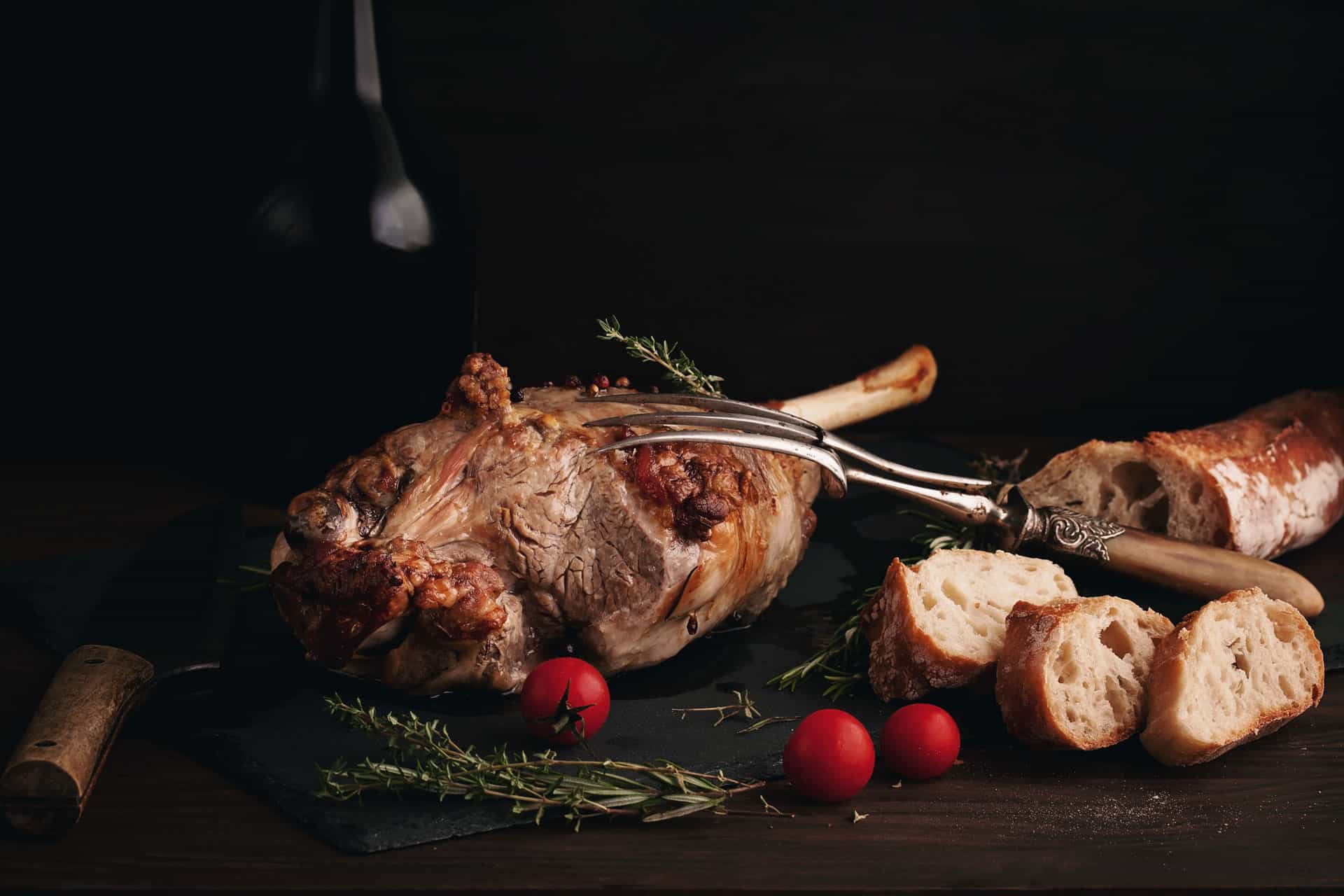We love our lamb! This succulent and tender meat is now celebrated as part of our national culture. If you’re wondering how to cook the best roast leg of lamb, we’ve searched high and low for some of the best tips.
No matter how you prefer your lamb cooked, read on for some interesting facts and cooking techniques from at home and around the world.
A brief history of lamb
History shows the humble sheep has been our friend and a source of food and clothing for 10,000 years. Ancient people in central Asia realised sheep’s potential and the woolly beauties soon spread throughout the world. Ever since, wherever people have gone, they have taken sheep with them.
Australia’s relationship with sheep is almost as old as western colonisation. With the introduction of the Spanish Marino in the late 1700s, wool and lamb became powerhouses of Australian agriculture. The hardy Marino faired well in Australia, adapting to our harsher climate. Along with successive inter-breeding, the sheep industry in Australia flourished. You may have heard of the term ‘the country that rode on the sheep’s back’. This saying comes from the fact that Australian wool supported the Aussie economy well into the 1950s.
With a healthy wool trade, naturally, there also comes lamb. Australia is the largest consumer of lamb in the world (yes, even more than New Zealand).
Lamb here is relatively cheap and excellent quality compared to much of the rest of the world. You may notice if you travel, particularly around North America, that lamb is a rare menu item. It can also be difficult to find in supermarkets and at butcher shops. The meat is more expensive and less readily available.
Australia’s lamb-loving culture
As well as being delicious, Australian lamb comes with an added sense of identity. Meat and Livestock Australia have produced cunning and successful campaigns for lamb for many years. This marketing has introduced lamb as a national dish and part of our culture.
Those of you who were around in the 1990s might remember Naomi Watts turning down a date with Tom Cruise, saying: “Sorry I can’t. Mum’s doing a lamb roast.”
More recently, lamb has been promoted as the meat of choice for Australia Day. Witty and sometimes divisive ads have strengthened Lamb’s cultural hold on Australia. With ‘Lambassaders’ such as AFL great Sam Kekovich and TV legend Richie Benaud equating Lamb with Aussie pride, the meat is considered as Australian as koalas and Vegemite on toast.

The different cuts of lamb
There are nine different lamb cuts, each great for different meals. Here is a list of each and their strengths:
- Great for slow cooking, lamb ribs are full flavoured with lots of rich lamb fat.
- The lamb neck is rich with connective tissue providing a full, rich taste. Neck can be cut into rosettes for slow cooking, chops, great for stews and curries or fillet, excellent for a slow roast.
- The delicious and versatile forequarter is perfect for roasting. It can also be cut into racks of chops for a cheaper alternative to loin.
- Containing the rib bones backbone and eye muscles a rack can be slowly roasted or split into individual cutlets. Tender cutlets suit high temperature cooking like frying or grilling.
- Short loin. The short loin is a tender cut best suited to high heat roasting and grilling. A boned and rolled loin will make a quick and easy roast that is perfect for stuffing. The eye of loin is one of the tenderest parts of the sheep. It’s perfect for rolling and stuffing as well.
- The tenderloin does very little work so is almost fat-free and has very little connective tissue. This makes for very tender meat that can be roasted whole or cut into medallions.
- Chump makes up your basic lamb chops. Cheap and easy to prepare, usually by pan frying. The rump comes from the same area and is great for roasting or dicing.
- Leg is a flavoursome and tender option great for roasting. Roast bone-in, bone-out or butterflied. The leg also produces a great mini roast, perfect for those with less time to roast.
- Lamb shank is the area of bone above the knee and under the leg. Slow cook your shank in liquid to produce its unique flavour.
What to serve with your lamb
For the traditional Aussie Sunday Roast, there is nothing better than roast vegetables to go with your lamb. Potatoes, carrots, pumpkin, brussels sprouts, all drowned in brown gravy make up a classic lamb roast, Mint sauce or mint jelly is also a favourite to go along with Aussie lamb.
Morrocan lamb is growing in popularity these days. With its rich mix of spices, Moroccan lamb can be served with couscous or the veggies of your choice.
Lamb is also great in curries. Rice and poppadoms, as well as naan bread, will always go well with an Indian lamb curry. Asian curries also pair nicely with white rice and green vegetables, such as wombok, bok choy and choy sum.
In terms of drinks, in general lamb is recommended to serve with red wine. Experts suggest a pinot noir or chianti. The colour-rich flavour of a cab-sav also matches well with the richness of lamb.
If you prefer white wine, Cellarmasters recommends you “try lamb with wines that carry a little more complexity and weight. Oak-aged Chardonnay, Arneis (from Italy or Australia), aged Hunter Valley Semillon, rich Viognier and aromatic Gruner Veltliner would be fine matches.”
In the middle of the two, a dry rosé is recommended.
To pair beer with your lamb, look for a strongly flavoured ale, malty stout or porter.
The Westport Club has white wine and beer deals in their online member specials – you can take advantage of heavily-discounted offers at Rewards Shop, by ordering online.

How Other Countries Serve Lamb
Greece
Lamb is an extremely popular dish in Greece. Not only is it featured in many traditional Greek recipes, but it also has religious significance. Lamb is served whole, over a spit, at Easter. The intestines are stuffed with organ meat, becoming a delicacy known as kokoretsi, and then it too is roasted over the spit. This tradition is popular as it follows Lent and most Grecians are ready for some meat.
In addition, this meat at Easter is symbolic because it represents lamb sacrifices made during Biblical times.
Besides Easter, Grecians love to eat Lamb roasted with potatoes, particularly for Sunday dinner. It was common for people to bring their roast to their local bakery or fourno, to have their roast cooked for them as many people did not have their own ovens and it was a way to avoid heating up their homes during the warmer months. Some Grecians still carry on this tradition at their local fourno. In Greece, they like to keep their roast lamb simple; seasoning it with garlic, oregano and lemon.
India
You will find many Indian lamb recipes online and there is a good reason for this. Not only do many Indians tend to avoid beef for religious reasons, it is also a good substitute for goat, a prolific meat in India.
Lamb production is not commonplace in India, however, when outside of India it is often used as a substitute for goat in curry recipes and is slow roasted. India roast lamb often uses fragrant and bold spices such as saffron, garam masala and mint.
The name of popular Indian lamb dish Rogan Josh translates to ‘red lamb’. This dish features cardamom, cumin, turmeric, garam masala and red chillies. The chillies help give the dish its colour.
England
The traditional Sunday Roast is the most popular way to serve roast lamb in the United Kingdom.
The Sunday Roast has religious origins as it was a meal to be eaten after church on Sunday. Catholics and Anglicans would traditionally abstain from meat on Fridays, whereas any meat could be eaten on Sunday. For many families, the Sunday hot lunch was a highlight and the most expensive meal of the week.
These days, the Sunday Roast remains a popular tradition where the meat of choice, often lamb, can be served with Yorkshire Pudding, roast vegetables, potatoes and gravy. Where Greek dishes use oregano, an English lamb is likely to favour rosemary for flavour.
English roast lamb is often served with mint jelly, mint sauce or redcurrant jelly. Leftovers from the Sunday Roast will be incorporated into other meals for the week. There’s nothing like a cold lamb sandwich!
Russia
In Russia, meat would traditionally be boiled, rather than roasted, in a porridge or soup where it will usually be served cold with various jellies and pickles.
Lamb could also be roasted over a spit, but usually only in more affluent houses. The juices from a Russian lamb dish will often be mixed with butter or sour cream to create a gravy for the accompanying vegetables. Thick and rich meat gravy is not common in Russia.
Morocco
Lamb is a staple in Morocco. Moroccan lamb tends to have a milder flavour than lamb in other places around the world due to the physiology of Moroccan sheep breeds.
The practice of Méchoui, which involves roasting a whole lamb over a spit, is a common way to prepare roast lamb. In Morocco, lamb is traditionally served without cutlery as the meat is so tender it can be removed from the bone easily and without effort. The roasted meat is usually spiced with cumin and salt only.
France
As in Greece, lamb is also served at Easter in France. Le Gigot d’Agneau, translating to leg of lamb, is usually seasoned quite simply with garlic, olive oil, salt, pepper and fresh rosemary.
A French leg of lamb is sometimes served quite pink in the middle, whereas others prefer it cooked through. This ‘délicieux’ dish is often served with green beans, potatoes and gravy made with pan juices and red wine.
Tips on how to cook the best roast leg of lamb
If you already salivating at the thought of roasting your own leg of lamb, there are plenty of ways to ensure you reach lamb perfection. Everyone has their own techniques but the following will help you get a better result:
How to cook the best roast leg of lamb: Preparation
While it is up to you, you don’t necessarily have to marinate a leg of lamb before roasting it. This is because lamb is already generally a juicy and tender meat. Use seasoning instead, or let it marinate for a maximum of one hour.
In terms of bones, some chefs believe leaving the bone in will add to the flavour.

How to cook the best roast leg of lamb: Cooking
Roasting times will vary, not only on the cut of lamb but also on how rare you want the roast to be. A handy guide can be found here on the Australian Lamb website on how to cook the best roast leg of lamb.
If you are truly serious about perfecting your next lamb roast, weigh it first so you know exactly how much you’re dealing with. From here, set your cooking times according to your preferred outcome.
A shorter cooking time presents a more rare roast. However, the jury is out on the ‘best’ result in this regard. If you like your lamb well-done, you need not feel ashamed!
You may want to invest in a meat thermometer for spot-on results. Meat thermometers are cheap and generally easy to use. Simply stick them in and read the temperature of the meat. The following can be used as a guide:
- Rare 60°C
- Medium rare 60–65°C
- Medium 65–70°C
- Medium well done 70°C
- Well done 75°C
How to cook the best roast leg of lamb: Serving
Another great tip is to let your lamb rest before carving so the juices are reabsorbed and your roast is juicy and flavorful. It is recommended to let your roast sit for 10 – 20 minutes before carving.
When carving, chefs say going against the grain of the meat will result in a juicier cut.
If there are leftovers, get creative with a curry dish or even a breakfast of lamb, eggs and beans.
Some Of The Most Popular Lamb Recipes
If you are looking for some inspiration on how to cook the best roast leg of lamb, there are many popular lamb recipes here to inspire you.
Jamie Oliver has a perfect roast lamb recipe that is sure to impress.
Another traditional yet comforting roast lamb recipe from Taste.
Curtis Stone serves up a delicious BBQ lamb leg with a crisp salad.
Hugh Fearnley-Wittingstall adds anchovy in an interesting take on the traditional lamb roast.

